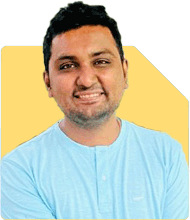Is Rs 4.65 Cr Enough to Retire at 53 with Monthly Expenses of Rs 2.5 Lakh?
Ramalingam Kalirajan |10881 Answers |Ask -Follow
Mutual Funds, Financial Planning Expert - Answered on Sep 24, 2024
He has an MBA in finance from the University of Madras and is a certified financial planner.
He is the director and chief financial planner at Holistic Investment, a Chennai-based firm that offers financial planning and wealth management advice.... more

My age is 53, I am planning to retire by March 2025, I have 2cr invested in Mutual filings, 2cr FD, 45 lakhs in post office. 25 lakhs in Jeevan Shanti, getting 12250 per month. 50 lakhs in saving Having own house, I need 2.5 lakhs per month. Please advise my retirement plans
You have done a commendable job accumulating a variety of investments as you approach retirement. Your current assets include:
Rs 2 crore invested in mutual funds
Rs 2 crore in fixed deposits
Rs 45 lakhs in post office schemes
Rs 25 lakhs in Jeevan Shanti, providing Rs 12,250 per month
Rs 50 lakhs in savings
You own your house, so no rent or loan obligations
Your monthly requirement is Rs 2.5 lakhs, and you plan to retire by March 2025. Let’s assess how to structure these investments to generate the income you need, while ensuring financial security throughout your retirement.
Financial Goals: Retirement Income of Rs 2.5 Lakhs Per Month
To meet your monthly requirement of Rs 2.5 lakhs, we need to carefully plan your investment portfolio for steady cash flow and long-term sustainability. Given your age and investment horizon, a balanced approach with a mix of growth and income-generating assets will be key.
Your current financial assets can generate a comfortable income stream with the right strategy. Let’s go over each asset class and plan the optimal way to structure them.
Evaluating Your Investments
1. Mutual Funds (Rs 2 Crore)
You have Rs 2 crore invested in mutual funds. Mutual funds can be a strong source of income in retirement, but the type of funds matters. Actively managed mutual funds with a focus on generating regular income or hybrid funds can provide both growth and income.
Regular Withdrawal Plan: A Systematic Withdrawal Plan (SWP) can be set up to generate regular income from your mutual fund investments. SWP allows you to withdraw a fixed amount every month, providing liquidity while keeping your capital invested and growing.
Review Fund Types: Ensure that your mutual fund investments are diversified into funds that offer a balance between equity for growth and debt for stability. Large-cap and hybrid funds can offer this balance, helping you manage risk while still achieving returns that beat inflation.
Avoid relying solely on index funds or direct funds. Actively managed funds will give better returns in a volatile market because of professional oversight.
2. Fixed Deposits (Rs 2 Crore)
Your Rs 2 crore in fixed deposits provides stability, but the returns may not be enough to keep pace with inflation. Over time, the real value of this money could diminish.
Partial Reallocation for Higher Returns: Consider shifting a portion of your fixed deposit into balanced or conservative mutual funds. This will help increase returns while still maintaining safety. For example, you can allocate part of this into a debt-oriented mutual fund for consistent, inflation-beating returns.
Fixed Deposit Laddering: If you prefer keeping some portion in FDs, you can create a "ladder" by investing in FDs of different maturities. This strategy will help you manage liquidity needs while maximising returns.
3. Post Office Investments (Rs 45 Lakhs)
Your Rs 45 lakhs in post office schemes is another safe investment, and it’s advisable to retain these for their risk-free nature.
Retain for Stability: Post office schemes like Senior Citizen Saving Scheme (SCSS) and Monthly Income Scheme (MIS) are excellent for retirees. They provide a steady monthly income and are relatively safe. Continue holding these for the fixed monthly income.
4. Jeevan Shanti Policy (Rs 12,250 Per Month)
The Jeevan Shanti policy provides you with Rs 12,250 per month. This is a good start, but it covers only a small portion of your monthly needs.
Income Supplement: The monthly income from Jeevan Shanti can be used to cover smaller recurring expenses. However, you will still need additional income from your other investments to meet your Rs 2.5 lakh monthly requirement.
5. Savings (Rs 50 Lakhs)
You have Rs 50 lakhs in savings. While it’s good to have liquidity, savings accounts offer low returns and are not ideal for long-term goals.
Emergency Fund: Keep a portion of this Rs 50 lakhs (around 6 to 12 months of expenses) as an emergency fund in a savings account or liquid fund. This will cover any sudden or unforeseen expenses.
Reinvest Excess Savings: Any excess over the emergency fund can be reallocated to growth-oriented investments like balanced mutual funds or senior citizen savings schemes. This will provide better returns while maintaining access to the funds when needed.
Structuring Your Retirement Income
You need to generate Rs 2.5 lakh monthly, and here’s how your portfolio can be structured:
Jeevan Shanti Income: Rs 12,250 per month
Post Office Schemes: You can generate additional fixed monthly income from the Rs 45 lakhs invested here. SCSS or MIS can provide you with regular payouts.
This should cover a portion of your Rs 2.5 lakh requirement, but the remaining will need to come from your mutual funds and FD portfolio.
Strategy for Monthly Cash Flow
Systematic Withdrawal Plan (SWP): Set up an SWP from your mutual fund investments. With Rs 2 crore in mutual funds, you can withdraw a fixed amount every month while still keeping the principal invested. This can easily generate a significant portion of your monthly income.
FD Laddering: Use your FDs to cover the balance of your income needs. By creating an FD ladder, you can ensure that a portion of your FDs matures every year, providing both liquidity and consistent income.
Inflation Protection and Growth
While generating current income is important, your investments need to grow to keep pace with inflation. Here’s how you can protect your portfolio from inflation:
Equity Exposure in Mutual Funds: Ensure a portion of your mutual funds is in equity-based funds, as they offer long-term growth potential. A balanced or hybrid mutual fund can provide equity exposure with lower risk.
Rebalancing Portfolio: Review your portfolio periodically to maintain the right balance between equity and debt. As you move further into retirement, you can slowly reduce the equity portion, but it should never be zero to protect against inflation.
Managing Risk and Liquidity
Retirement planning is not only about income generation but also risk management. You need to balance safety and liquidity with growth. Here’s how you can manage this:
Diversification: Keep a diverse portfolio. You already have investments across multiple instruments—mutual funds, fixed deposits, post office schemes, and Jeevan Shanti. This reduces risk.
Health Insurance: As you age, medical expenses could rise. Ensure you have comprehensive health insurance to cover medical emergencies without dipping into your retirement corpus.
Estate Planning: Plan for how your assets will be distributed in the future. This ensures that your loved ones are taken care of without legal complications.
Tax Efficiency
Generating income post-retirement can attract tax, so it’s important to structure your withdrawals in a tax-efficient manner.
Tax-Saving Investments: Make use of tax-saving mutual funds under Section 80C, even though you are close to retirement. This can reduce your tax burden.
Capital Gains Tax: Withdraw from your mutual funds in a way that minimises capital gains tax. Long-term capital gains tax is lower, so try to keep investments for over a year to benefit from this.
Senior Citizen Tax Benefits: As a senior citizen, you are eligible for higher tax deductions. Utilise benefits under Sections 80D (for health insurance premiums) and 80TTB (for interest income).
Final Insights
You have built a solid financial base with Rs 4.7 crore in investments. To meet your retirement goal of Rs 2.5 lakh monthly income, we recommend a balanced approach. Continue generating income from your Jeevan Shanti, post office schemes, and fixed deposits. For additional income and growth, use an SWP from your mutual funds, and consider reallocating a portion of your FDs to mutual funds for better returns.
Regular reviews and portfolio rebalancing will ensure that your investments keep up with inflation while providing a steady, reliable income.
Best Regards,
K. Ramalingam, MBA, CFP,
Chief Financial Planner,
www.holisticinvestment.in
https://www.youtube.com/@HolisticInvestment
You may like to see similar questions and answers below
Abhishek Shah | Answer |Ask -Follow
HR Expert - Answered on Feb 09, 2023
Ramalingam Kalirajan |10881 Answers |Ask -Follow
Mutual Funds, Financial Planning Expert - Answered on Jul 25, 2024
Ramalingam Kalirajan |10881 Answers |Ask -Follow
Mutual Funds, Financial Planning Expert - Answered on Aug 14, 2024
Ramalingam Kalirajan |10881 Answers |Ask -Follow
Mutual Funds, Financial Planning Expert - Answered on Aug 14, 2024
Ramalingam Kalirajan |10881 Answers |Ask -Follow
Mutual Funds, Financial Planning Expert - Answered on Jul 18, 2025
Ramalingam Kalirajan |10881 Answers |Ask -Follow
Mutual Funds, Financial Planning Expert - Answered on Dec 12, 2025
Ramalingam Kalirajan |10881 Answers |Ask -Follow
Mutual Funds, Financial Planning Expert - Answered on Dec 12, 2025
Reetika Sharma |423 Answers |Ask -Follow
Financial Planner, MF and Insurance Expert - Answered on Dec 12, 2025
Reetika Sharma |423 Answers |Ask -Follow
Financial Planner, MF and Insurance Expert - Answered on Dec 12, 2025
Reetika Sharma |423 Answers |Ask -Follow
Financial Planner, MF and Insurance Expert - Answered on Dec 12, 2025
Reetika Sharma |423 Answers |Ask -Follow
Financial Planner, MF and Insurance Expert - Answered on Dec 12, 2025
Reetika Sharma |423 Answers |Ask -Follow
Financial Planner, MF and Insurance Expert - Answered on Dec 12, 2025
Mayank Chandel |2572 Answers |Ask -Follow
IIT-JEE, NEET-UG, SAT, CLAT, CA, CS Exam Expert - Answered on Dec 11, 2025
Mayank Chandel |2572 Answers |Ask -Follow
IIT-JEE, NEET-UG, SAT, CLAT, CA, CS Exam Expert - Answered on Dec 11, 2025
Ramalingam Kalirajan |10881 Answers |Ask -Follow
Mutual Funds, Financial Planning Expert - Answered on Dec 11, 2025
























